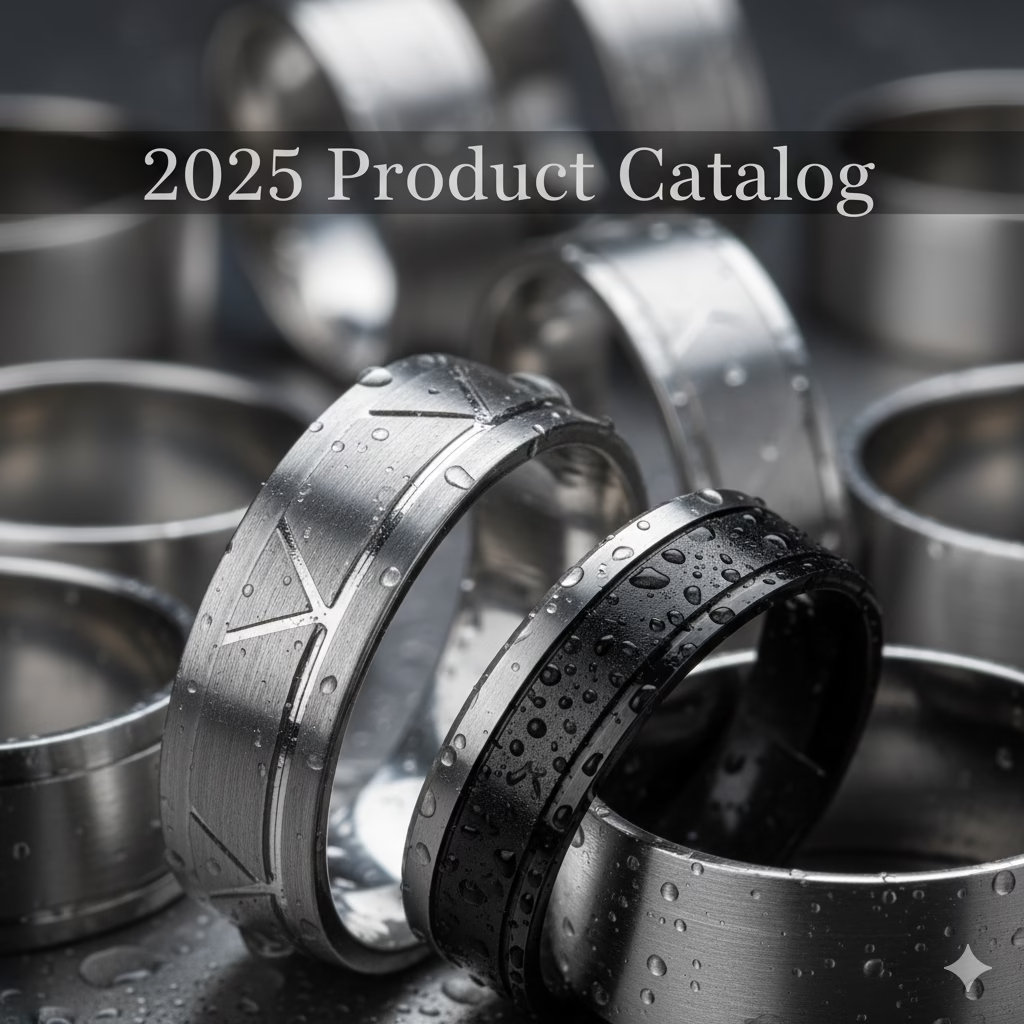Why Understanding Pricing is Important
When you’re buying a stainless steel ring, knowing how pricing works helps you get real value for your money and avoid paying too much. Without understanding what goes into the cost, it’s easy to end up with a product that’s overpriced or low in quality.
For sellers and manufacturers, grasping pricing is just as crucial. It ensures you cover all your costs and set a competitive price that keeps your business profitable. Pricing too high can drive customers away, while pricing too low can hurt your bottom line.
Keep in mind, stainless steel ring prices don’t stay fixed. Market factors like raw material availability, demand shifts, and competition affect price changes regularly. Knowing these influences helps both buyers and sellers make informed decisions.
Factors Influencing Stainless Steel Ring Prices

When figuring out the price of a stainless steel ring, several key factors come into play. First up is raw material cost, which depends on the grade and weight of stainless steel used. Higher grades like 316L or 904L usually cost more, and heavier rings naturally drive up material expenses.
Next is design complexity and craftsmanship. Simple bands cost less to produce, while intricate designs or custom engravings take more time and skill, increasing the price.
Labor costs cover all manufacturing steps—from shaping and polishing to finishing and quality checks. These can vary depending on where the ring is made and the expertise needed.
Don’t forget overheads like machinery, rent, utilities, and shipping. These operational costs affect the final price per unit, especially for smaller manufacturers.
Branding and marketing expenses also influence pricing. Well-known brands often charge more to cover advertising and brand value.
Market factors matter too—competition and desired profit margins help set prices that keep sellers competitive but profitable.
Finally, any extra features like gemstones, plating (e.g., black or gold PVD), or customizations add to the cost. These options give buyers more choice but increase the manufacturing complexity and price.
All these components combine to shape the stainless steel ring price you see.
To figure out the price of a stainless steel ring, you can follow a simple step-by-step formula that covers all the main costs.
Step 1: Calculate Raw Material Cost
Multiply the ring’s weight by the cost per gram of the stainless steel grade used. This gives you the base material cost, which is a big part of the price.
Step 2: Add Labor and Manufacturing Costs
Include all labor expenses — from crafting and shaping to finishing touches. This covers both fixed costs (like wages) and variable costs (like overtime).
Step 3: Overhead Cost Allocation
Divide overhead expenses (machinery, rent, utilities, logistics) across each unit to add a fair share of these indirect costs to the ring’s price.
Step 4: Add Markup
Apply a markup percentage based on the desired profit margin. This ensures the business stays profitable while staying competitive.
Step 5: Adjust for Market Demand and Competition
Finally, tweak the price to reflect what customers are willing to pay and what competitors are charging.
Price = Material Cost + Labor Cost + Overhead + Markup
Real Life Calculation Example from D&J STEEL RING
- Material Cost (10 grams x $0.50 per gram) = $5.00
- Labor Cost = $7.00
- Overhead Allocation = $3.00
- Markup (30%) = ($5 + $7 + $3) x 0.30 = $4.50
- Total Price = $5 + $7 + $3 + $4.50 = $19.50
This breakdown helps both buyers and sellers see exactly where the price comes from, making it easier to evaluate fair value for stainless steel rings.
When using the pricing formula for stainless steel rings, getting accurate inputs is key. Here’s how to apply it well:
Measure Ring Weight and Material Grade Accurately
- Use a precise scale to weigh the ring in grams. This helps you calculate the raw material cost correctly.
- Confirm the stainless steel grade (like 316L or 304) since prices vary by quality and durability. Higher grades usually cost more but last longer.
Estimate Labor and Overhead Costs Locally
- Labor costs can differ based on location and skill level. Get quotes from your area or your manufacturer to estimate accurately.
- Include local overheads like rent, utilities, and shipping when calculating total costs. Overheads can add up and affect pricing significantly.
Use Competitor Benchmarks Effectively
- Research prices of similar stainless steel rings from local and online sellers. This helps you understand market expectations and what customers are willing to pay.
- Don’t just copy prices—consider your unique features and costs to stay competitive but profitable.
Avoid Common Pricing Mistakes
- Don’t skip overheads or underestimate labor—this leads to pricing too low and losing money.
- Avoid setting your markup too high without reason; it can push customers away.
- Don’t ignore market demand trends; if demand is low, you may need to adjust prices or offer promotions.
Following these steps keeps your pricing fair and competitive whether you’re selling or buying stainless steel rings in the U.S marketplace.
Additional Pricing Considerations
When pricing stainless steel rings, several extra factors come into play beyond the basic formula.
Volume Discounts for Wholesalers
Buying in bulk usually lowers the per-ring price. Wholesalers get discounts because large orders reduce handling and shipping costs. If you’re a retailer or bulk buyer, ask suppliers about tiered pricing based on order size.
Customization and Personalized Rings
Adding custom engravings, unique designs, stones, or plating can increase costs. These custom options require more labor and materials, so expect a higher price that reflects the extra work and materials used.
Prices often shift based on holidays, sales events, or market trends. Retailers in the U.S. might offer discounts around holidays like Valentine’s Day or Christmas. Watch for these seasonal changes as they can impact the price you pay or set.
Warranty and After-Sales Services
Some sellers add value by including warranties or repair services, which can slightly increase pricing. These extras offer added security and might be worth paying for if you want longer-term protection for your stainless steel ring.
Considering these additional pricing factors will give you a clearer picture of the true cost and value when buying or selling stainless steel rings.
Frequently Asked Questions About Stainless Steel Ring Pricing
Why are some stainless steel rings more expensive despite a similar appearance?
Even if two rings look alike, the price can differ because of factors like the grade of stainless steel used, craftsmanship quality, and additional features such as plating or stones. Higher-grade steel lasts longer and resists rust better, while detailed work and finishing add value.
How does stainless steel quality affect price and durability?
Stainless steel grades like 316L or 304 vary in corrosion resistance and strength. Premium grades cost more but last longer and maintain their shine. Lower-quality steel might be cheaper but can tarnish or wear out faster, which affects the ring’s lifespan and appearance.
Can plating or coatings affect the overall price?
Yes. Adding plating (like gold or black IP coating) or protective layers increases production costs and impacts the price. These coatings improve look and durability but require extra labor and materials.
How to verify if a stainless steel ring price is fair?
Check these key points:
- Weight and grade of the stainless steel
- Quality of craftsmanship and finishing
- What’s included (plating, stones, warranty)
- Compare similar rings from reliable sellers locally or online
- Ask about their pricing breakdown if possible—material cost, labor, overhead, and markup
If a deal seems too good to be true, it might mean lower quality or hidden costs. Knowing the pricing basics helps you avoid overpaying or selling below value.













